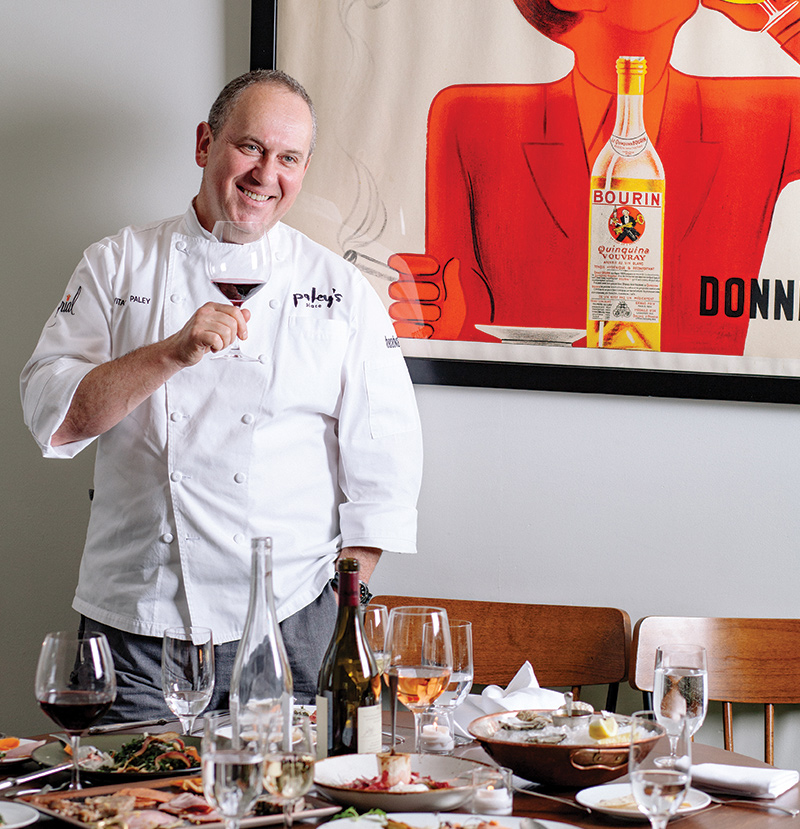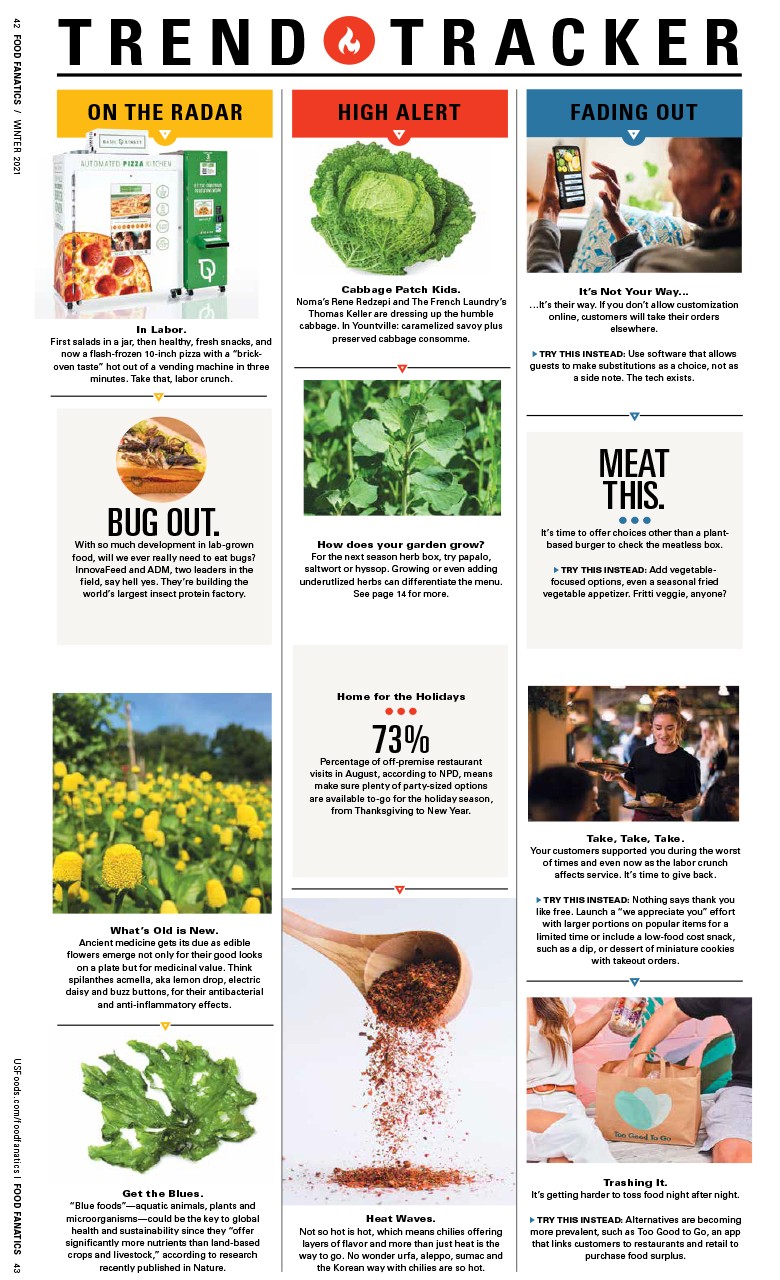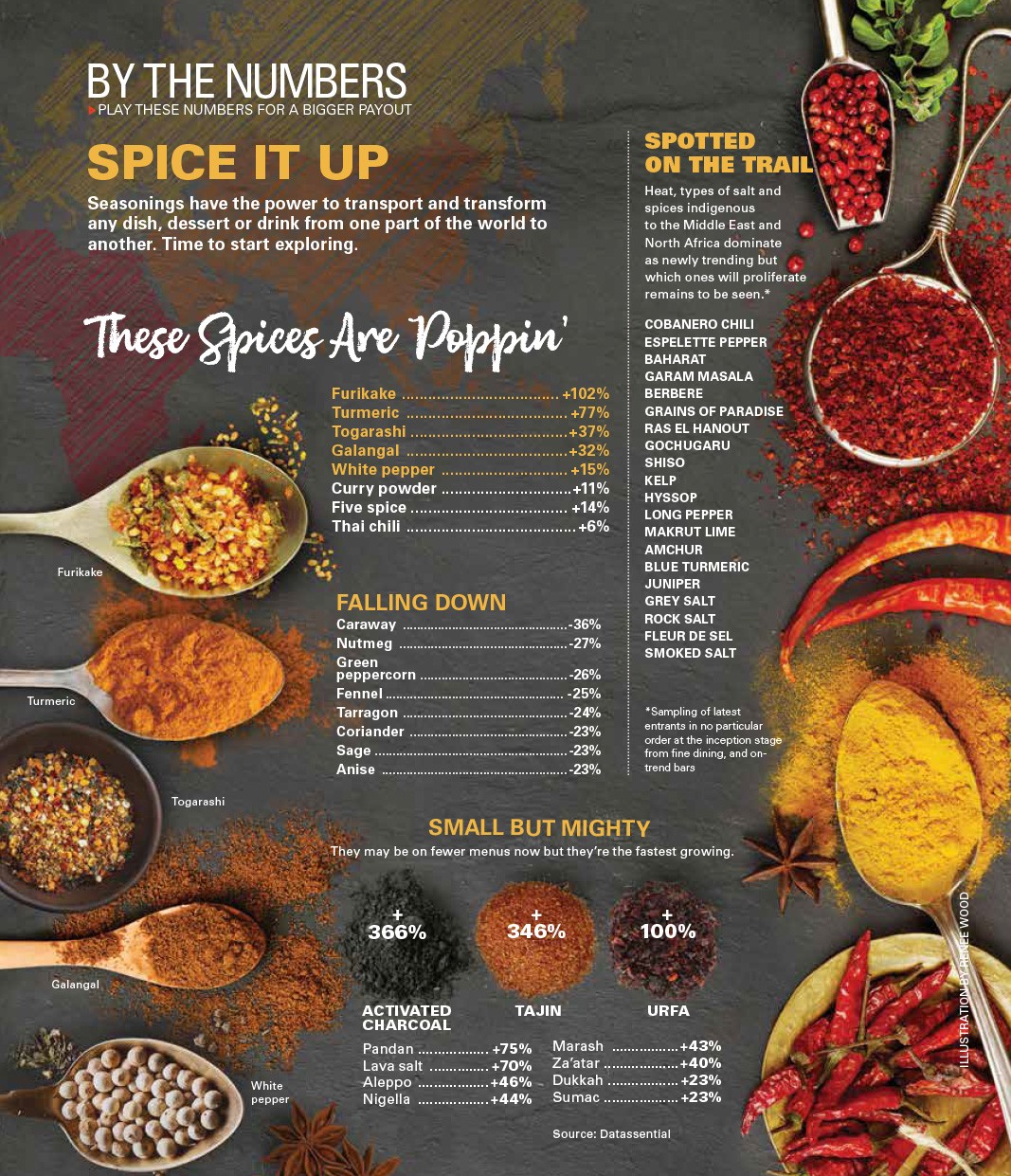THE SMARTER WAY TO LTO
Make bank with limited-time-only 2.0
 The old school practice of limited-time menu offerings is enjoying newfound practice and popularity.
The old school practice of limited-time menu offerings is enjoying newfound practice and popularity.
To out-maneuver supply chain bottlenecks from the pandemic, chefs and restaurateurs are forging ahead with menus that change weekly. They’re promoting these new offerings on social media and email newsletters to a fan base of regular diners, driving repeat traffic and staying top of mind. The menus are also smaller and easier to execute, a change that is also easing the labor crunch.
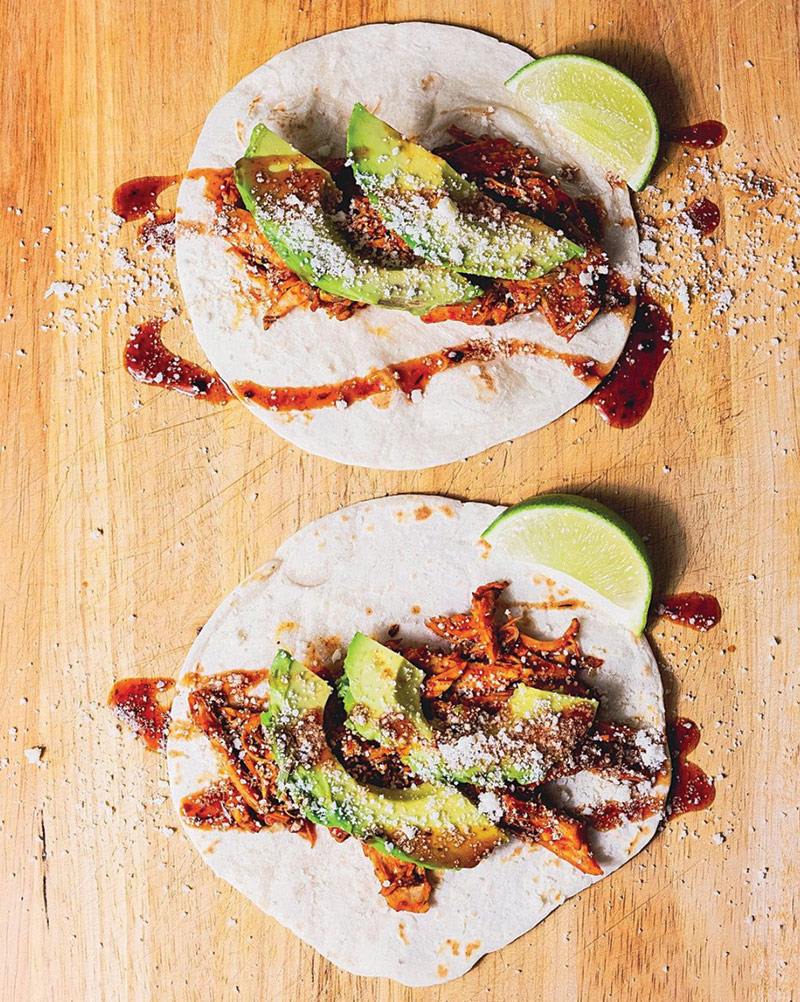 “People don’t travel like they used to, so we’re making a bigger appeal to locals for the moment,” says James Beard Award-winning chef Vitaly Paley of Portland, Oregon. “They’re loyal locals, but they can only eat the same thing so many times. It became apparent to us that we needed to get creative.”
“People don’t travel like they used to, so we’re making a bigger appeal to locals for the moment,” says James Beard Award-winning chef Vitaly Paley of Portland, Oregon. “They’re loyal locals, but they can only eat the same thing so many times. It became apparent to us that we needed to get creative.”
At his eponymous restaurant Paley’s Place – the only one of four that he’s keeping open – Paley offers a three-course, themed prix fixe menu that completely changes every three weeks, with three choices per course. Contemporary Japanese restaurant Mifune in Manhattan also has nixed its tasting menu for a daily changing omakase menu, which has been easier to execute with a smaller team.
No matter the concept, operators are finding more than ever that balancing creativity with running a business and staying nimble is both an art and a science that fits the LTO approach. Here are ways it’s positively impacting the business.
IS AN LTO MENU RIGHT FOR YOU?
In the before times, a limited-time-only approach helped control costs and gauge diner interest, especially for chains or multi-unit restaurants. They also worked well for cleaning out the walk-in and promoting uber seasonal items. An LTO approach can also ease current supply chain issues. Five points to consider:
- Are the bulk of your customers locals and regulars? If they are, an LTO menu could work well. Determine a theme for each menu. Figure out how long the menu holds interest and adjust accordingly.
- Do you have a strong social media presence? Social media and your website remains the most effective way to communicate with diners. Offer advance reservations for upcoming themes.
- Are you posting daily on social media and engaging with customers? Never underestimate the loyalty you’ll gain by interacting genuinely on social. Reacting with a “like” or an emoji goes a long way.
- Do you have the time? It’s not easy changing the menu weekly or twice a month. See “One Restaurant’s LTO Journey” for inspiration.
- Data doesn’t lie. Do you have a POS system or the technology to help track sales and inventory? Certain software services/programs can track sales according to weather, holidays, seasons and the impact of local events to help you with an LTO menu.
Improve Inventory
“I write the menu pretty vaguely so we can take advantage of what comes in,” Paley says. He often doesn’t know exactly what his long-standing local farm partners have sent until he opens the box. Using a phrase like “local vegetables” on the menu allows for flexibility to complement menu items with whatever is stocked in the walk-in.
At Mifune, co-executive chefs Yuu Shimano and Tomohiro Urata visit farmers markets daily to select ingredients for the days’ meals, which add up to a win for them and the diner.
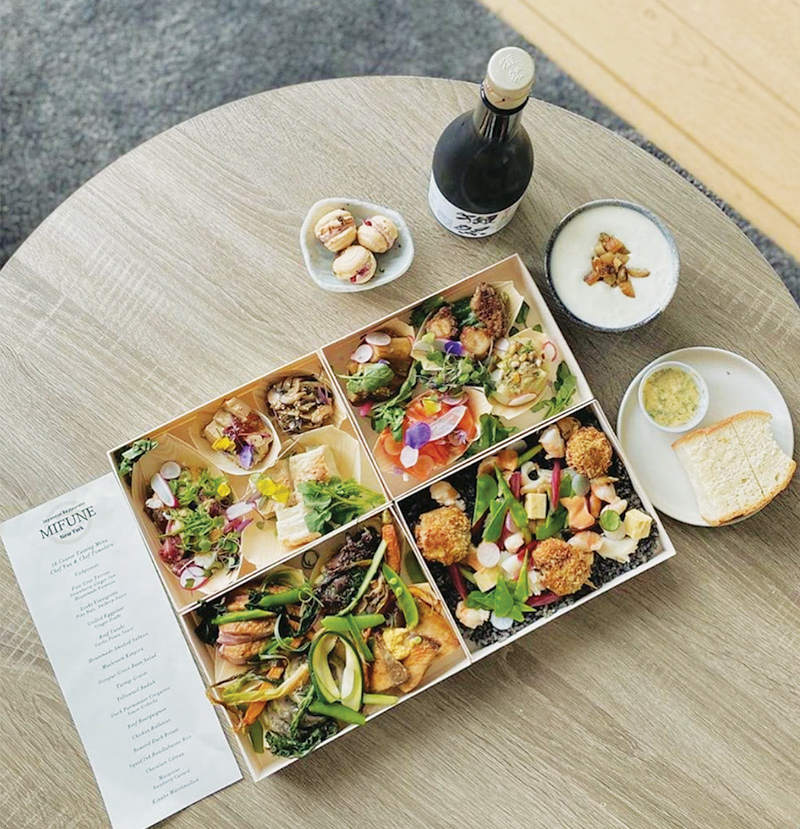 “We decided on the omakase tasting menu to avoid food waste and cut labor costs,” Urata says. “The omakase format affords our chefs the ability to change the menu daily and create a different experience for each customer’s visit.”
“We decided on the omakase tasting menu to avoid food waste and cut labor costs,” Urata says. “The omakase format affords our chefs the ability to change the menu daily and create a different experience for each customer’s visit.”
At fast casual Fields Good Chicken, LTOs can help with inventory, create FOMO and reinforce the brand. For example, a limited number of tacos at each of its five Manhattan locations use rotisserie chicken from the previous service that’s pulled and simmered in achiote sauce and served on locally sourced corn tortillas with housemade guacamole, cotija cheese, onions and cilantro. The tacos were created to reduce food waste daily. The zero-waste tacos are also carbon neutral because Fields purchases carbon credits to offset the environmental impact of the tacos.
Make Pricing Holistic
Paley approaches pricing from a blended cost perspective, basing the price of the three-course prix fixe on the choice of entrée. A recent menu ranged from $75 for a 6-ounce salmon fillet or smoked pork porterhouse to $85 for a 10-ounce salmon bone-in steak or 10-ounce dry-aged pepper-crusted prime rib.
“That gives us a nice cushion to make sure that the pricing structure works,” he says. “I stopped zeroing in on particular dishes. At the end of the month, we reconcile and adjust accordingly.”
Mifune’s eight-course tasting menu is priced at $125, with an optional $40 upgrade for premium ingredients like Japanese wagyu beef or Hokkaido uni. That pricing is in line with tasting menus at other New York fine dining restaurants serving contemporary Asian cuisine like Jua and Kajitsu. Even without mandated capacity restrictions, the restaurant continues to maintain 6 feet of distance between tables because not all diners feel comfortable in closer quarters.
Fields’ pulled chicken tacos are $4.50 each or three for $12. “The margins on the tacos are roughly the same as our other menu items; however, our overall food waste has gone down, which has saved on costs,” founder and CEO Field Failing explains. “If anything, the tacos have improved the margin on our rotisserie chicken category by reducing the waste of those items.”
Adjust Labor Accordingly
With labor in short supply, Paley’s Place is only open four days, from Wednesday through Sunday. They often turn each table three times, taking reservations as early as 4 p.m. to maximize revenue. Paley says that he has a full house almost daily and is booking out months in advance, reflecting Portlanders enthusiasm for a pampered fine dining experience.
When they first reopened, Paley brought back a small crew of long-term employees who knew each other well and felt safe working together. Failing says that Fields has been lucky, too, in retaining many staff members during the pandemic.
Mifune has less than half the kitchen staff compared with pre-pandemic, so they no longer serve lunch or an á la carte menu at dinner. Streamlining the menu allows the kitchen to continue achieving a high level of intricate, elegant dishes with fewer cooks. Plus, labor costs are higher now, and so they’ve had to work harder at reducing food costs to make up for that.
Prep
Tuesday and Friday are big delivery days at Paley’s Place, and Tuesday is a full day for the core back of house team, with six to eight hours of prep. A full day of prep is key to allow the kitchen to feel confident and organized heading into four busy service nights in a row.
Prep for the new limited zero-waste tacos at Fields Good Chicken is minimal as most ingredients, from tacos to toppings, are cross-utilized. The only extra step for this menu item is hand-pulling the meat from the rotisserie chickens.
Knowing the exact number of reservations and the exact dishes that will be served has helped Mifune prep precisely and minimize food waste. They accommodate pescatarian and gluten-free diets with advanced notice but cannot prepare a vegan menu, nor adapt for dietary restrictions on the fly.
One Restaurant’s LTO Journey
“Tuesday every week, we sit down and recap the week prior, plan for the week upcoming (and) if there are any product changes. One Tuesday out of every menu cycle, all of us come to the table with ideas and hammer them out. I take home those ideas, put my thinking hat on and put it all together. We always have three different appetizers and three different main courses. Two desserts stay on the menu, and one is seasonal. Flourless chocolate cake and creme brûlée are always on. Right now, with cherry season, it’s cherry pie. Not too fancy but delicious. We have another section of the menu that’s Paley’s favorites: steak and fries, burger, charcuterie/cheese plate. If somebody doesn’t feel like a three-course meal, they can have a nice little semblance of things.”
– Vitaly Paley of Paley’s Place on his LTO menu approach
